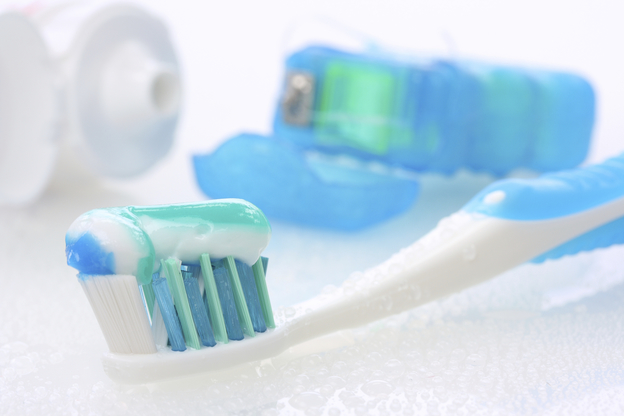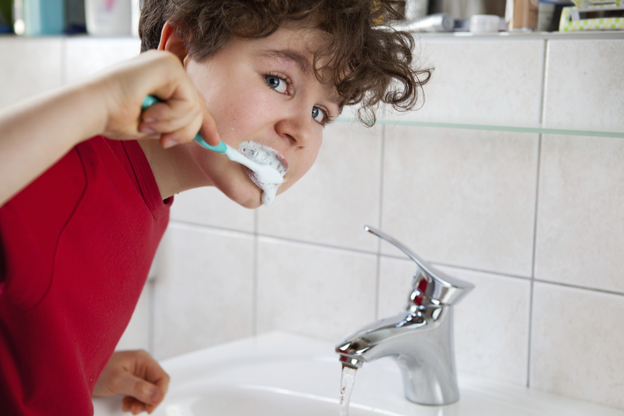SingaporeMotherhood | Parenting
June 2015
Braces: Does your Child need them?

One of the issues some growing children face relates to their mouths. No, it is not about what big chatterboxes they become, but concerns their teeth and whether or not they require braces. While it is not until a little later that they actually have to wear them, if at all, it is always good to get some expert advice as early as possible.
[banner][/banner]
What You Should Look Out For
“The usual age for fixed braces treatment ranges between ten and fourteen years old,” says Dr Arthur Lim Chong Yang, a Specialist in Orthodontics at Raffles Dental. “Girls are generally faster in the development of teeth and tend to have treatment earlier than boys. It is, however, good to have your child see an orthodontist when he or she is between the ages of seven and nine to check on their dental development as many problems can be managed more easily when detected earlier.”
As parents, it is also advisable to look out for particular signs which might indicate that your child needs braces. “The most common problem seen is crooked or crowded teeth,” Dr Lim explains. “A good predictor of whether crowding may occur is how spaced out the baby teeth are. Baby teeth, especially those at the front, should have spaces in between them. If baby teeth do not have spaces between them, then the adult teeth are likely to be crowded or crooked.”
“Other problems that will require braces are protruding teeth, a deep bite with the upper front teeth covering more than a third of the lower front teeth, spaces between teeth, or an open bite where there is no overlap between the upper and lower front teeth. Problems involving the jaws in which the lower jaw is too small or too large should also be brought to the attention of an orthodontist.”
How Do Braces Work?
Everyone knows that the function of braces is, in general, to correct the alignment of teeth. But how exactly does this little contraption fulfill such a mammoth task?
Dr Alexander Wenden, a Dental Surgeon at Unity Denticare explains: “In children with poorly aligned teeth, the natural mechanisms for tooth cleaning, such as saliva, function less effectively. This can lead to an increased risk of tooth decay. Teeth that are biting incorrectly can be shifted out of the underlying supporting bone, and this can cause the gums to recede, leaving behind unsightly long teeth.”
“If one of your teeth is stuck in the bone of one of your jaws and cannot erupt into the mouth, further unwanted consequences can occur. The un-erupted tooth may cause damage to the roots of the surrounding teeth.”
The little, or sometimes major, change in the way a child’s teeth look after the removal of braces can help him in non-physical ways as well. “The benefits of braces extend to self-esteem and image,” says Dr Wenden. “Studies have shown that very poorly aligned teeth have a negative effect on self-esteem. Also, for individuals with teeth that do not overlap at the front of the mouth, speech may be difficult and lisps can develop.”
Once your child has braces, it is very important for him to practice good oral hygiene – even more so than before. He will have to floss and brush his teeth and gums regularly and more carefully than before to prevent the development of tooth decay and gum disease. As a parent, make it your job too, to ensure that your child is picking up positive oral hygiene habits.
“Kids should be careful when brushing both the teeth and gums, especially under the wires, so as to prevent any staining or decay occurring on the teeth. Care is also required while eating so as to avoid damaging the braces. Hard and sticky candies should be avoided,” cautions Dr Wenden.
The Types of Braces Available
Generally, there are two types of braces available – removable or fixed. Braces can also differ depending on the type of materials they are made from. Removable braces are made of acrylic and incorporate wires to move teeth. These removable devices are used to treat simpler problems in younger children. Fixed braces are glued to the surface of the teeth and cannot be removed by the patient. These braces can treat more complex dental issues.
Braces can also be made of metal or ceramic; the main difference between these two is that ceramic braces are less noticeable than metal braces.
Braces can also be placed at different sides of the teeth:
1. On the front of the teeth: These braces have a wire connecting each brace to straighten the teeth. These can be metal-coloured but can also be clear or tooth coloured to make them less noticeable.
2. Behind the teeth: These are known as lingual orthodontics, as the braces are on the lingual or ‘tongue’ side of the teeth. This type of treatment provides a superior aesthetic option, as the braces cannot be noticed upon smiling or during general conversation.
Patients generally have to wear braces for about two years, although the treatment period may vary depending on the complexity of the case, how well the patient looks after his braces and his level of oral hygiene after putting on the braces. It is important to visit the dentist every four to six weeks after getting the braces, for a review and adjustments.
“The individual brackets which are glued onto the tooth surface are not changed but the wire that runs through each and every bracket may be changed,” explains Dr Lim. As for the cost of braces, this also depends on the complexity of the problem and the type of braces used. While a simple straightening could cost around $1,000*, most commonly, a treatment cycle will cost between $4,000* to $6,000*.
Is Your Child Ready?
Although financial considerations are important, you should also make sure that your child is ready for the journey ahead. “It’s very important that the patient is emotionally ready and receptive of fixed braces treatment before starting treatment,” says Dr Lim. “When braces are first put on, there’s a period of adjustment of up to a week during which some discomfort may be felt and, occasionally, ulcers may develop. This is, however, usually transient as young patients tend to adapt rather well. In the meantime, soft wax is usually given so that they can be placed over braces which are irritating ulcers or causing areas of soreness in the mouth.”
*quoted prices are accurate at the time of publication
All content from this article, including images, cannot be reproduced without credits or written permission from SingaporeMotherhood.
Follow us on Facebook, Instagram, and Telegram for the latest article and promotion updates.








